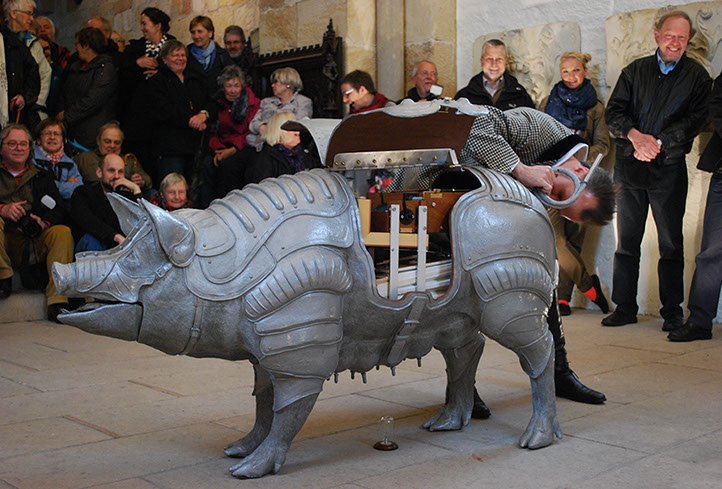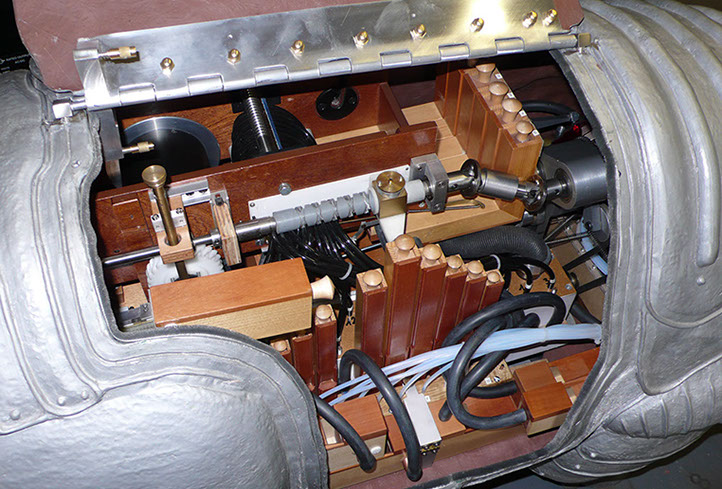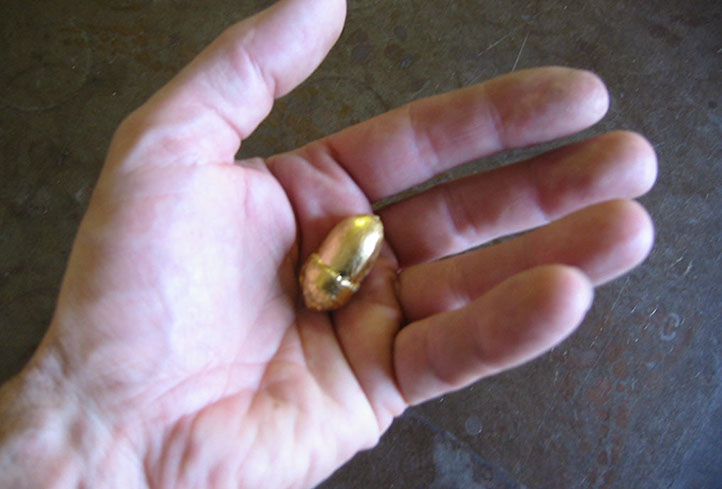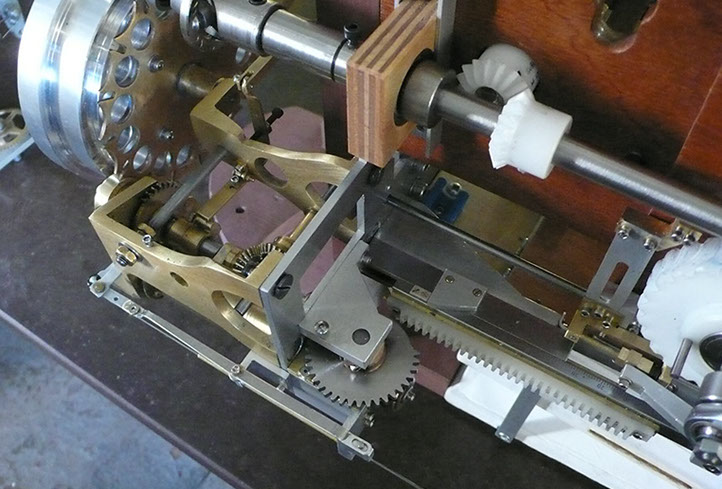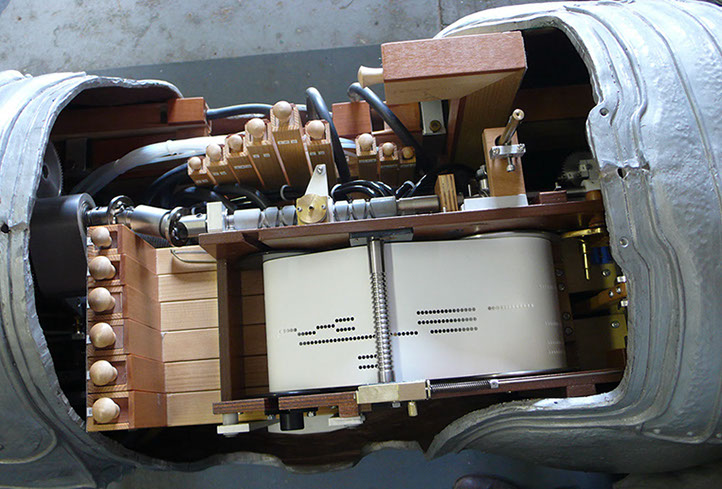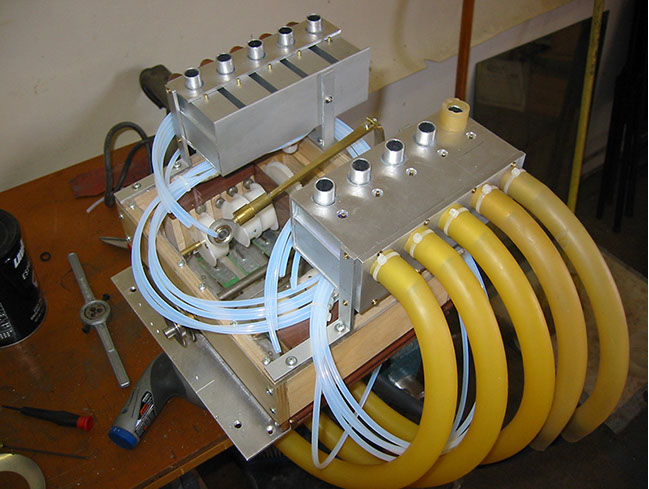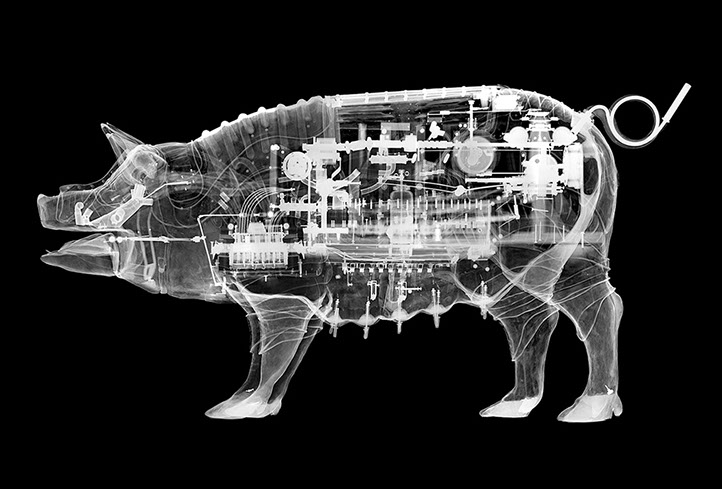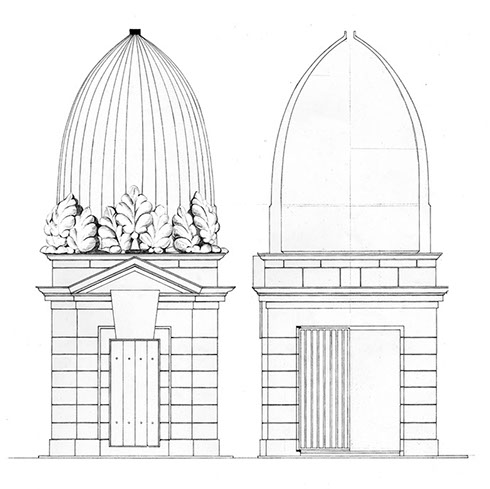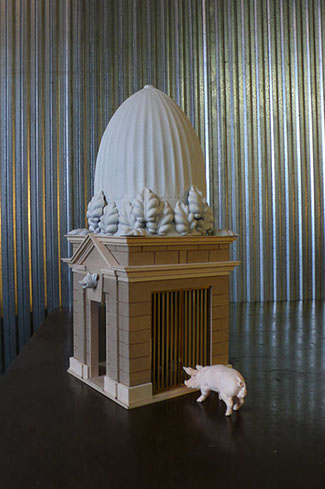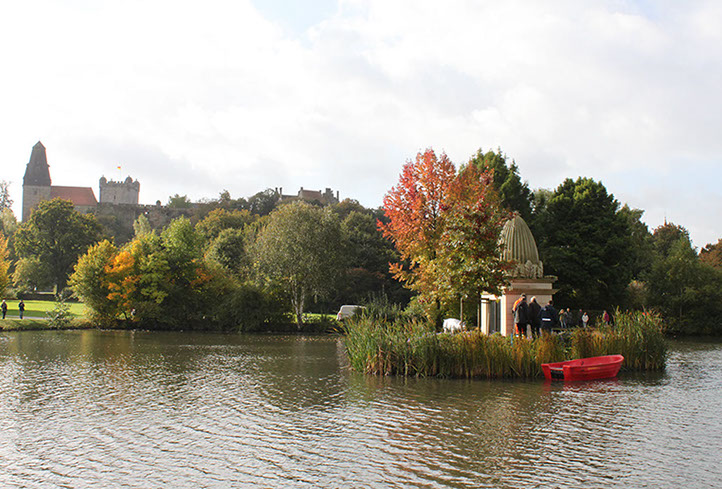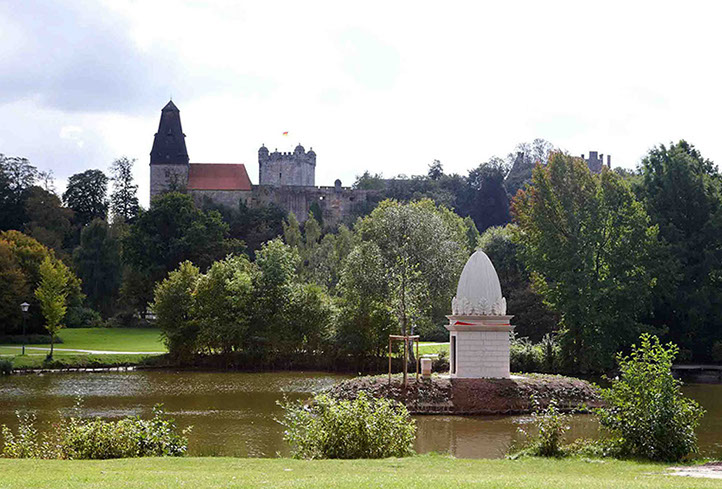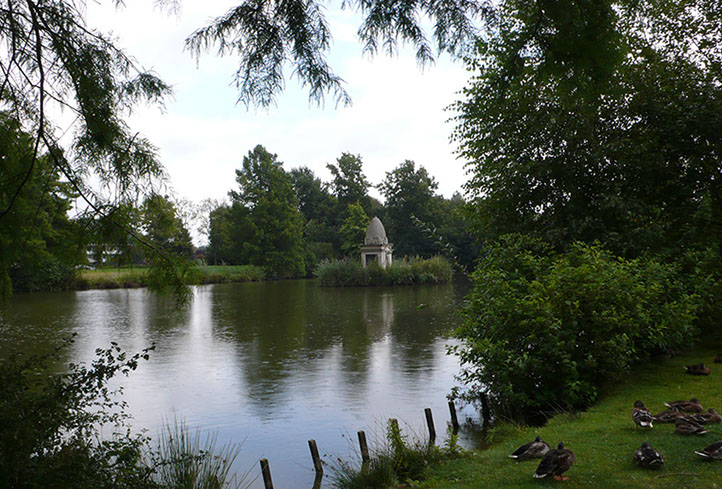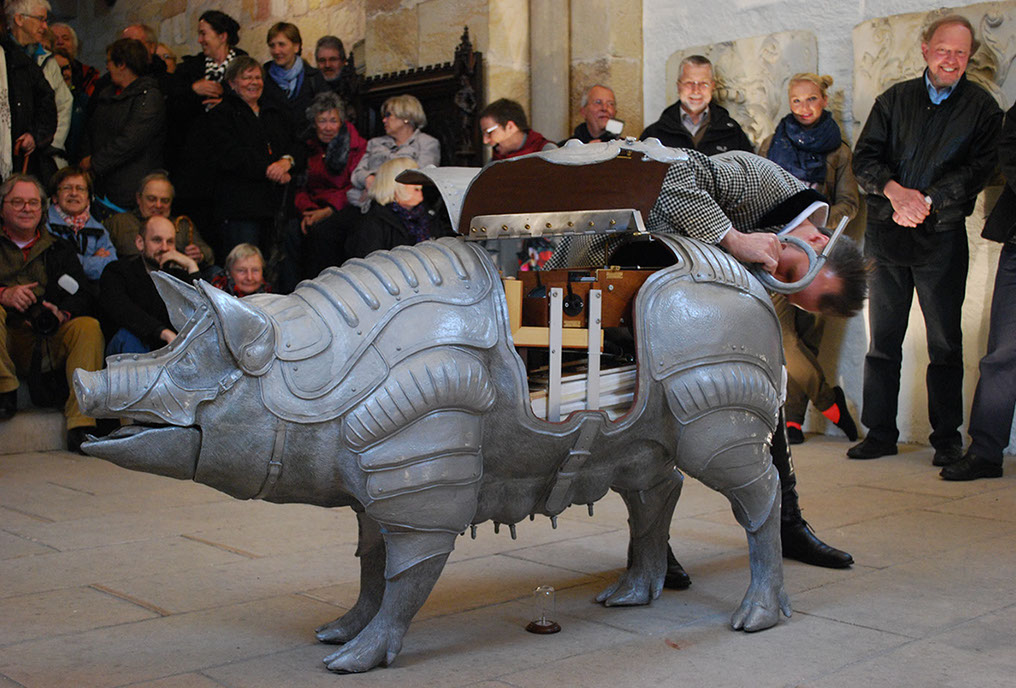
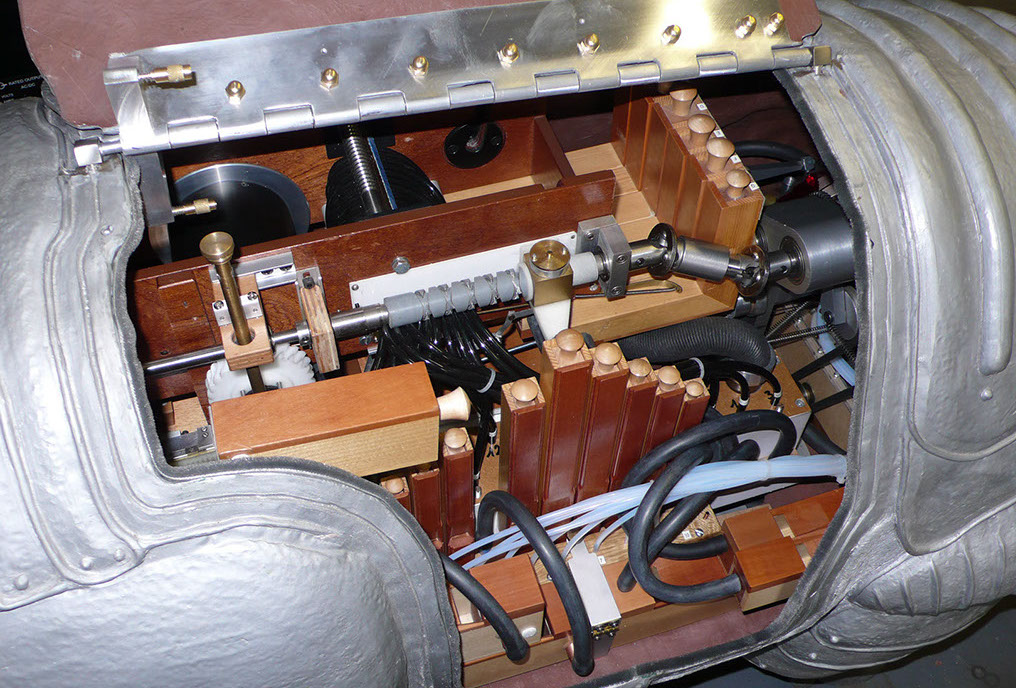
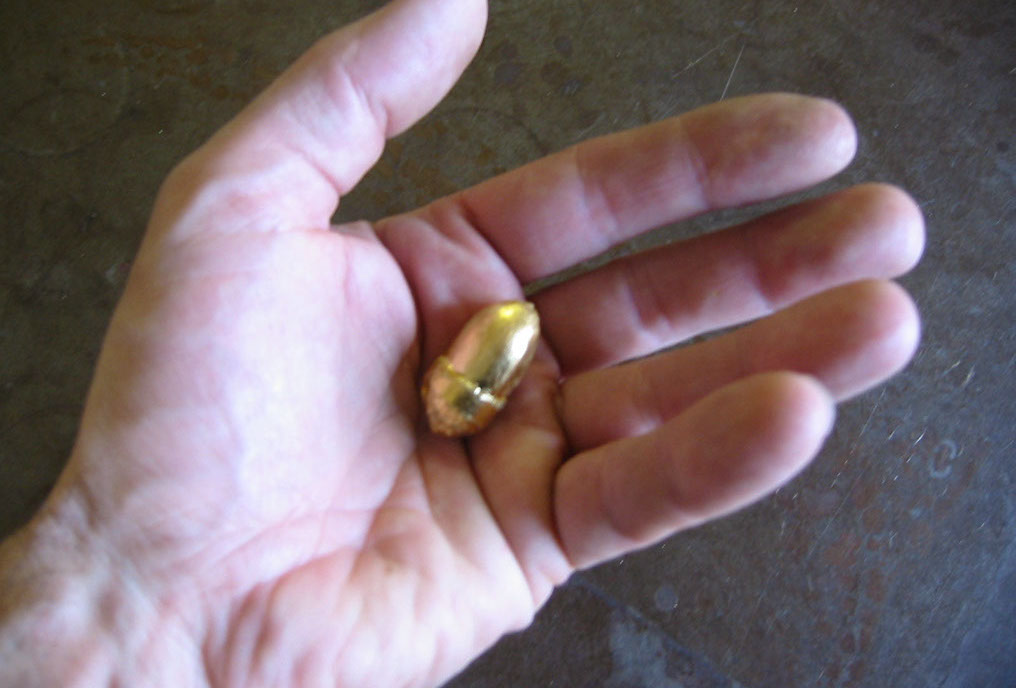
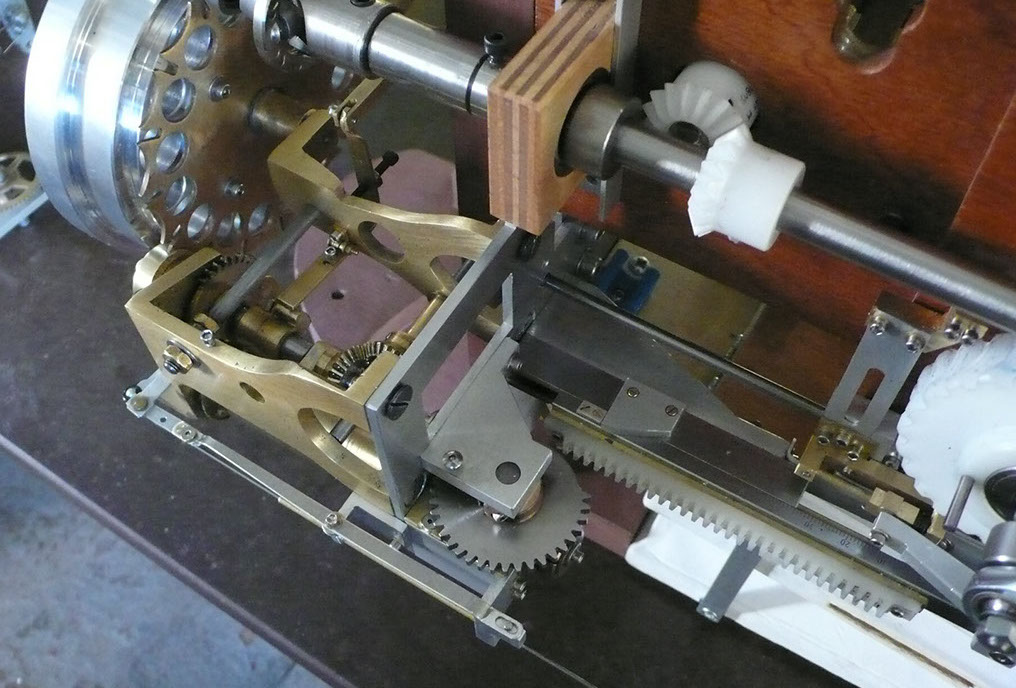
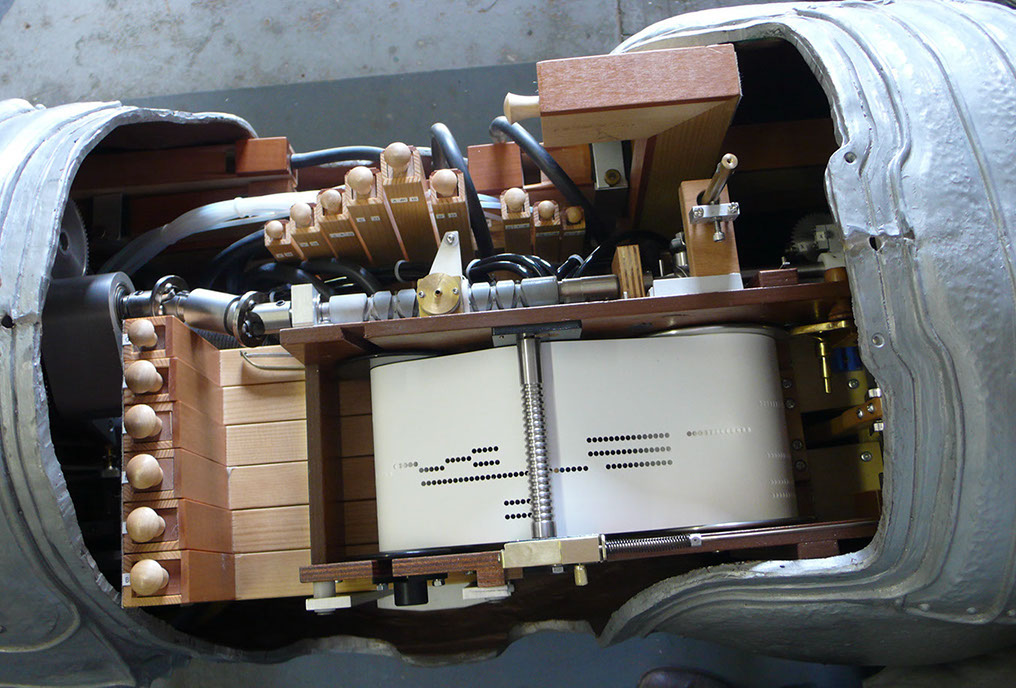
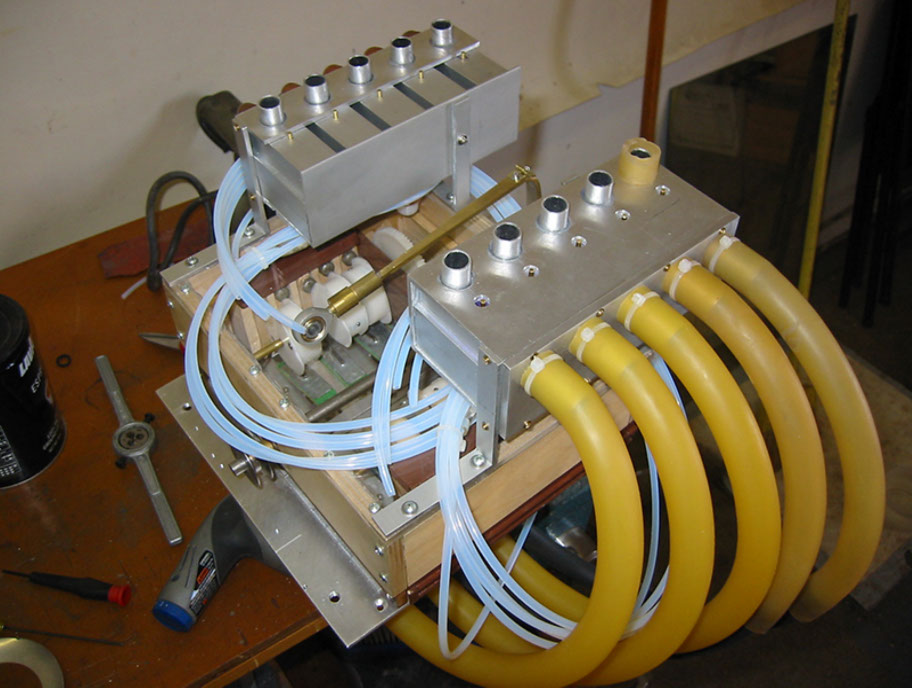
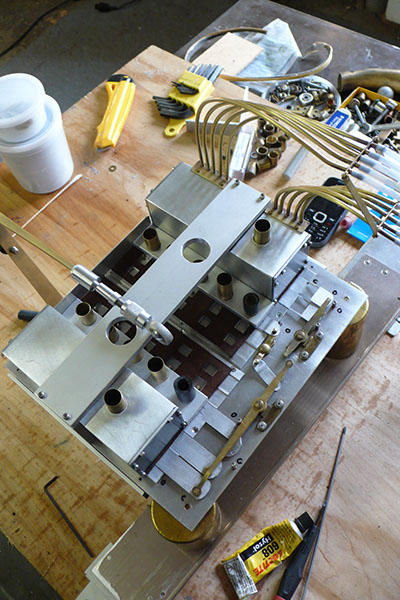
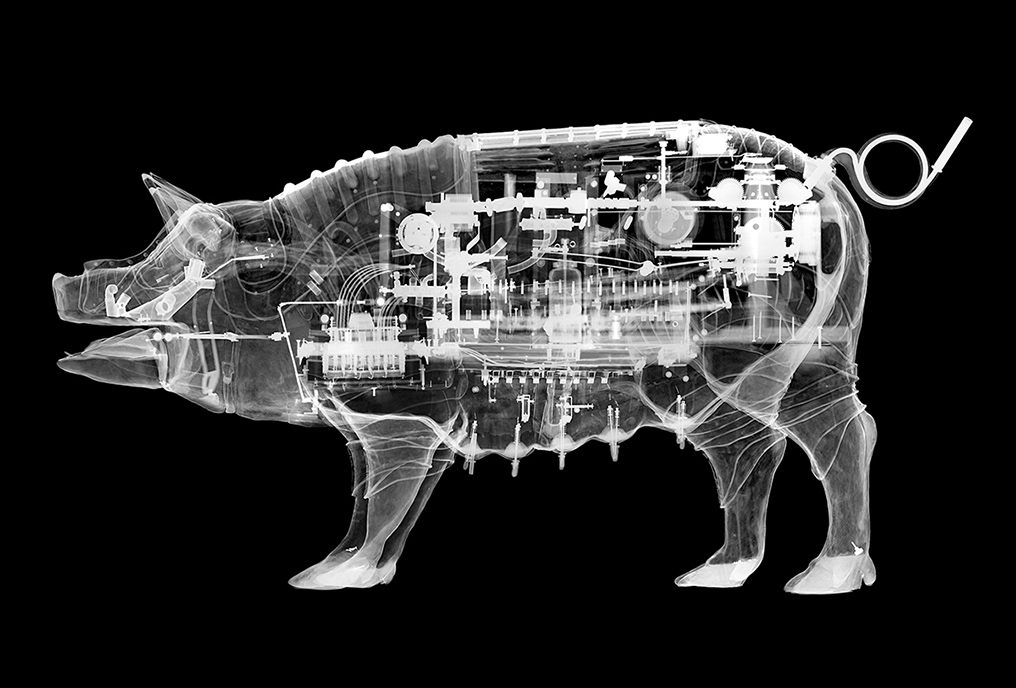
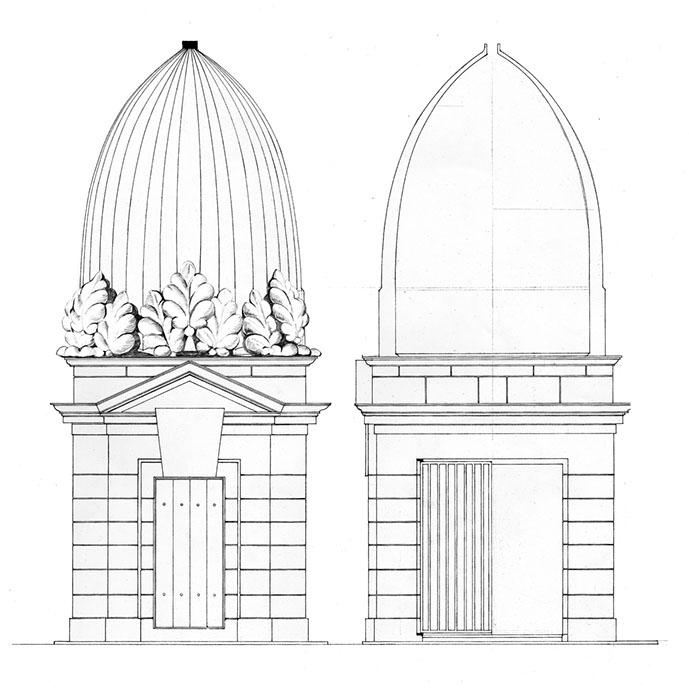
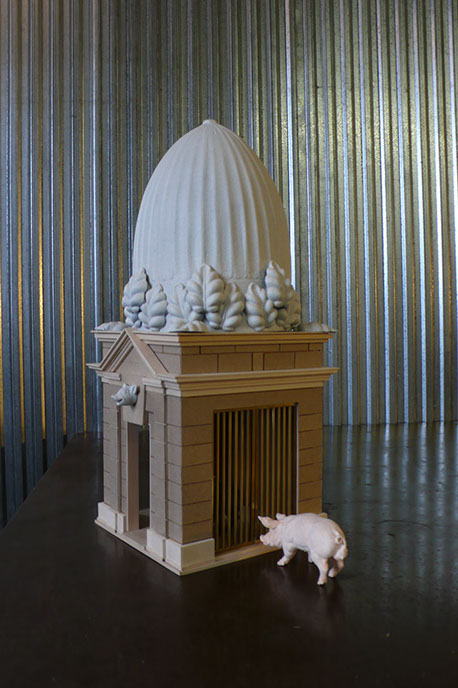
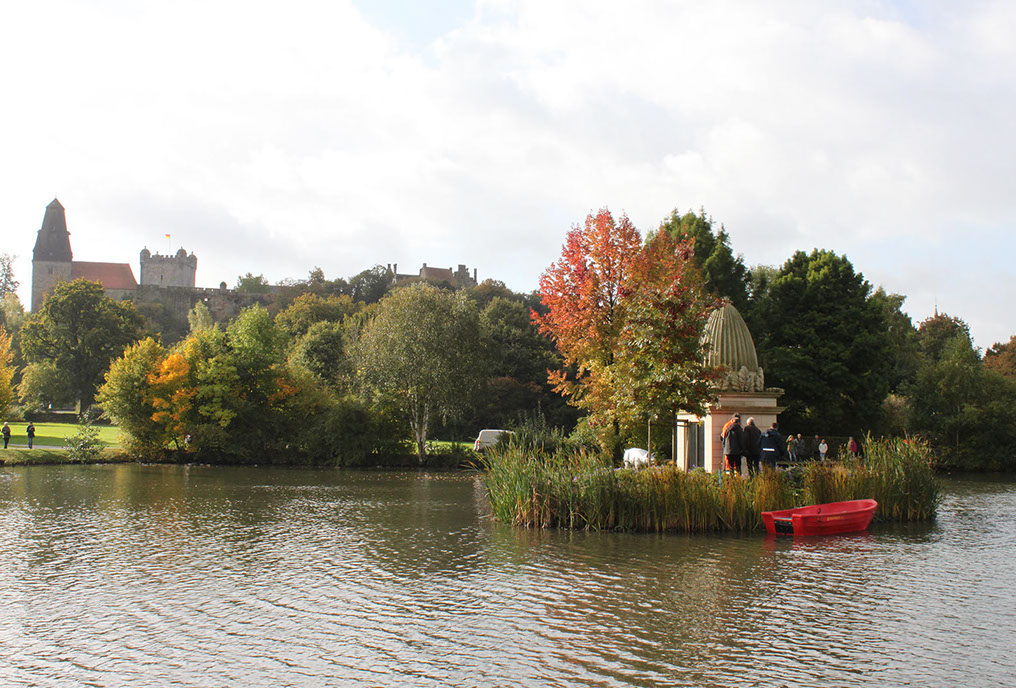
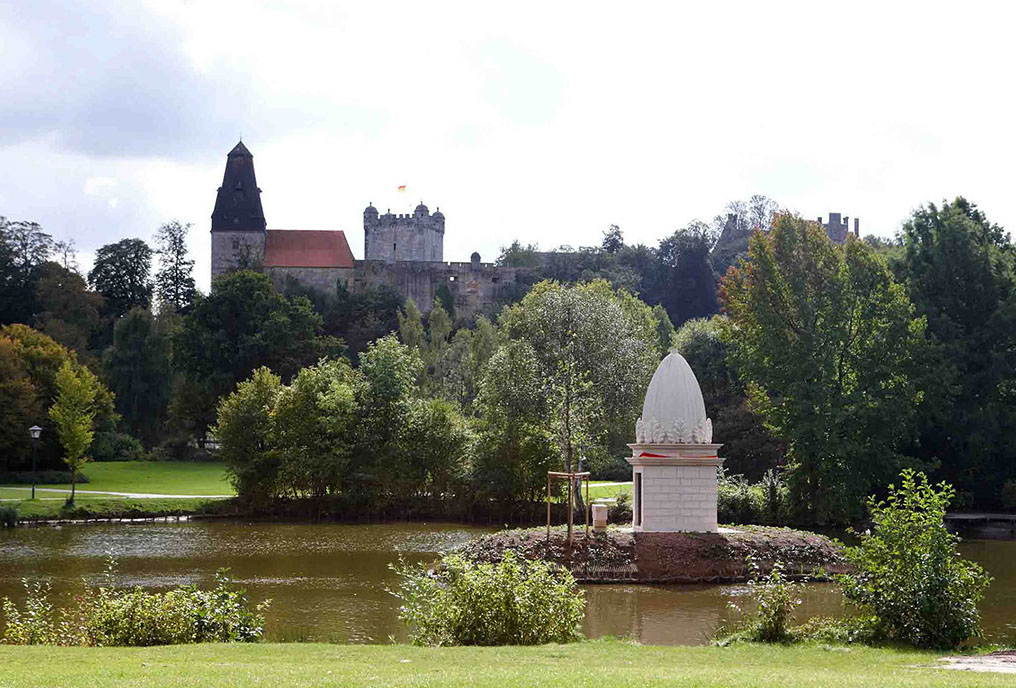
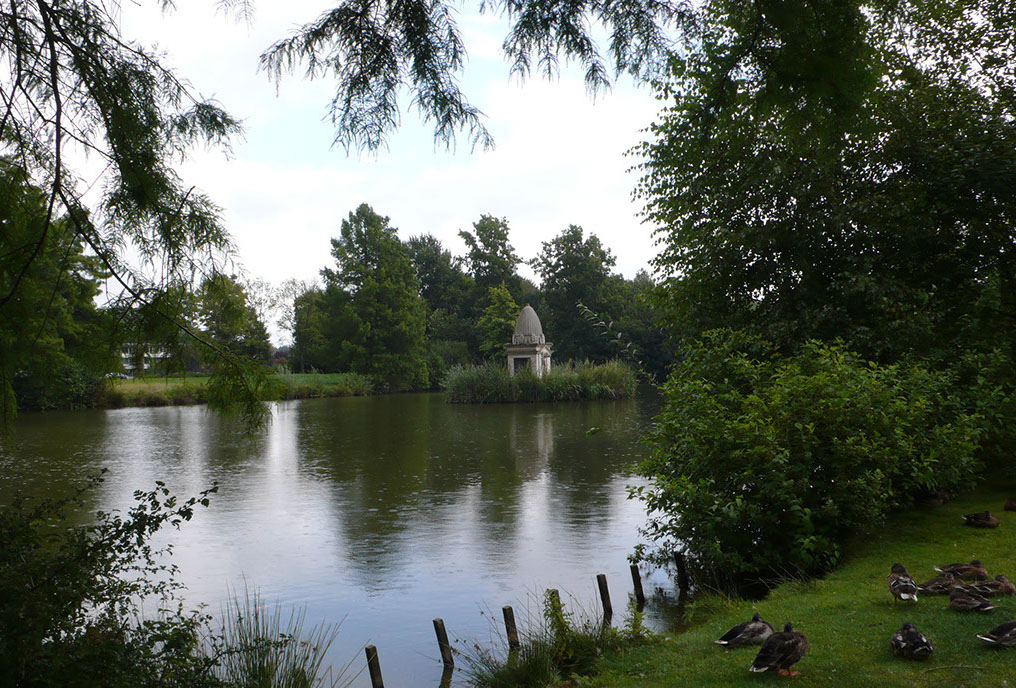
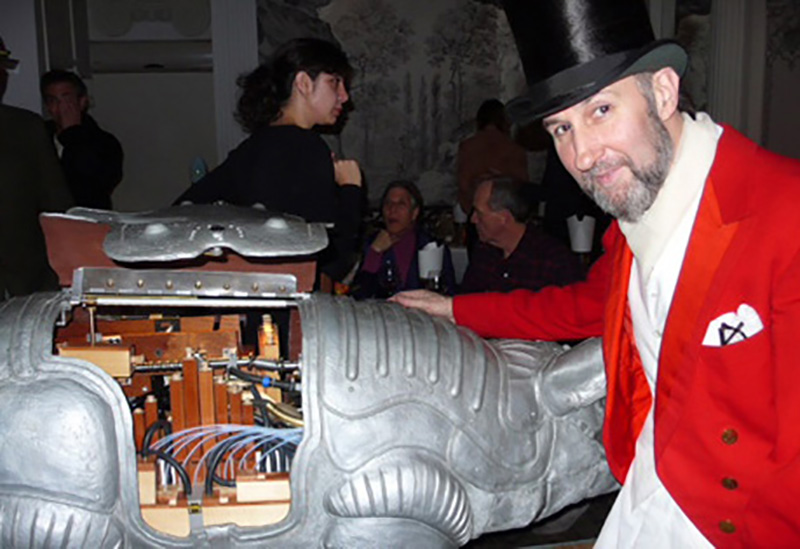
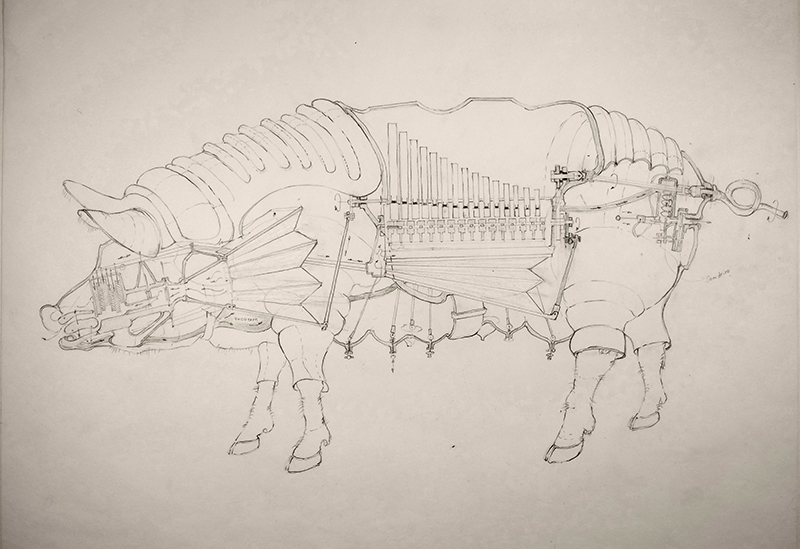
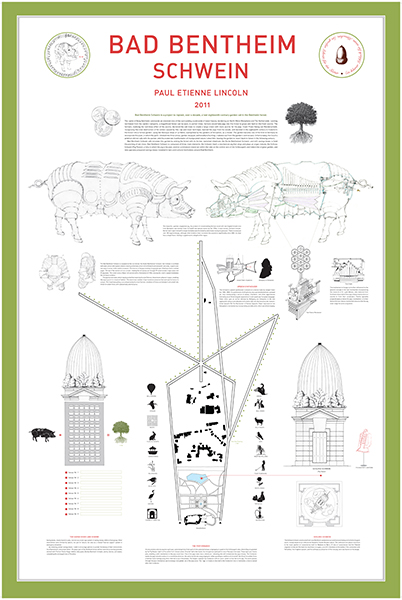
Bad Bentheim Schwein: The inauguration ceremony in Burg Bentheim, permanent public commission for the City of Bad Bentheim Organized by Raumsichten, Germany, 2013.
Bad Bentheim Schwein: The mechanical singing pig’s mechanism, shown with the saddle opened. 2013.
Bad Bentheim Schwein: Gilded acorn ejected out of the schwein on completion of a performance, 2013
Bad Bentheim Schwein: The mechanism inside the pig for transporting and gilding the acorns. 2010
Bad Bentheim Schwein: The Mylar musical score orchestrates the singing pipes (grunts) as well as the organ pipes, teat manipulation modulates the arrangement making every performance unique. 2010
Bad Bentheim Schwein: Primary voice box of the schewin. 2009
Bad Bentheim Schwein: Secondary voice chamber of the schwein. 2009
Bad Bentheim Schwein: X-ray of the schwein’s mechanics, see Editions for details. 2013
Bad Bentheim Schwein: Proposed drawings for the Pig Palace, a folly to be caved out of Bentheim sandstone. 2010.
Bad Bentheim Schwein: Scale model of the Pig Palace, 2010.
Bad Bentheim Schwein: The finished Pig Palace on an island in the grounds of Burg Bentheim. 2012
Bad Bentheim Schwein: The finished Pig Palace on an island in the grounds of Burg Bentheim. 2012
Bad Bentheim Schwein: Pig Palace housing the Bad Bentheim Schwein. 2012.
Bad Bentheim Schwein: The Pigmaster after a double porcine sing-off performance at Duane Park, the day before transport to its palace in Bad Bentheim, Germany. 2011.
Bad Bentheim Schwein: Cutaway drawing of the internal mechanism of the schwein. 2009
Bad Bentheim Schwein: Pigment print, 53 x 35 inches. Edition of 30 (English and German versions) 2011 See print for details.
1 - 16
<
>
READ MORE
ABOUT BAD BENTHEIM SCHWEIN (2009)
Bad Bentheim Schwein is a project to replant over a decade a lost eighteenth century garden, set in the Bentheim forest.
The castle of Burg Bentheim commands an elevated vista of the surrounding countryside of lower Saxony, bordering on North Rhine Westphalia and The Netherlands. Looking northwest from the castle’s ramparts, a magnificent forest can be seen; in earlier times, farmers would take pigs into this forest to graze and feed on the fresh acorns. The farmers, realizing the nutritious effect of the acorns, doctored the oak trees to create a large crown with more acorns for the pigs. Count Franz Georg van Manderscheidt, recognizing the slow destruction of his estate caused by this cap-and-mast technique, banned the pigs from his woods, and decided in the eighteenth century to transform the forest into a formal garden, using the Baroque ideas of Le Nôtre, exemplified by the gardens of Versailles, as a model. The garden became one of the first in Germany to incorporate this plan, in which the park—divided into three areas, garden, bouquet, and woodland hunting—radiates out from the garden’s central axes. Unfortunately, the Count’s ambition did not tally with his pocket and this elaborate manifestation of manipulated nature ruined him, leaving the garden to revert back to forest in the following century.
Bad Bentheim Schwein will reinstate this garden by uniting the forest with its former, banished inhabitant, the Bunte Bentheimer Schwein, and savings boxes to fund the planting of oak trees. Bad Bentheim Schwein is composed of three main elements: the Schwein itself, a mechanical pig that sings and plays an organ melody; the pig is housed in the Schloss Schwein (Pig Palace), a folly sited on a miniature island set within the lake on the central axis of the Schlosspark and indeed the original garden; nine specially prepared savings boxes installed in bars and cultural institutions around Bad Bentheim and the surrounding countryside.
CLOSE
